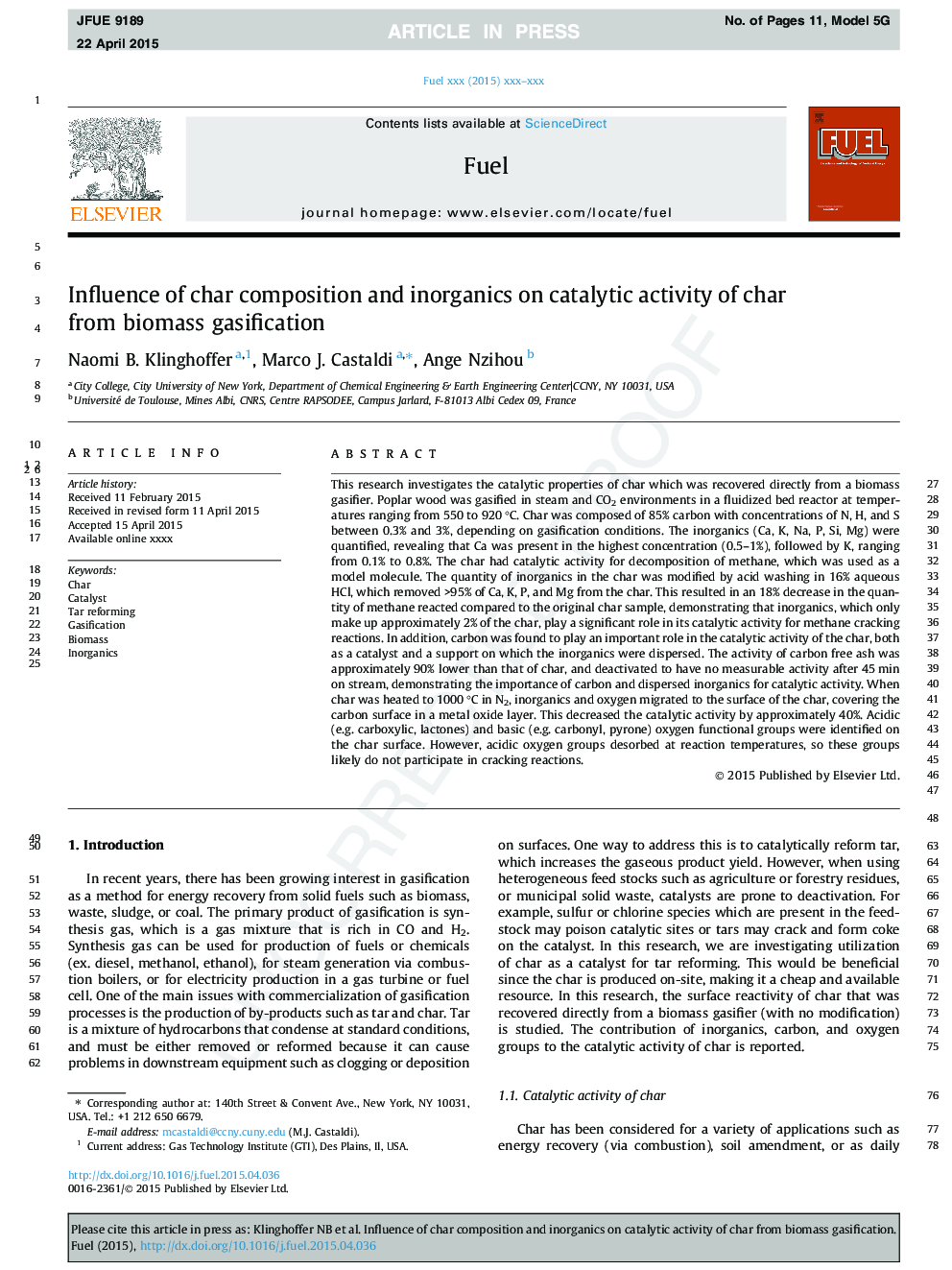| کد مقاله | کد نشریه | سال انتشار | مقاله انگلیسی | نسخه تمام متن |
|---|---|---|---|---|
| 6635220 | 461118 | 2015 | 11 صفحه PDF | دانلود رایگان |
عنوان انگلیسی مقاله ISI
Influence of char composition and inorganics on catalytic activity of char from biomass gasification
ترجمه فارسی عنوان
تاثیر ترکیب شیمیایی و غیر معدنی بر فعالیت کاتالیزوری کاراکتر از گازسیون زیست توده
دانلود مقاله + سفارش ترجمه
دانلود مقاله ISI انگلیسی
رایگان برای ایرانیان
کلمات کلیدی
چار، کاتالیزور، اصلاح تار، گازسیون، زیست توده، نانوذرات،
موضوعات مرتبط
مهندسی و علوم پایه
مهندسی شیمی
مهندسی شیمی (عمومی)
چکیده انگلیسی
This research investigates the catalytic properties of char which was recovered directly from a biomass gasifier. Poplar wood was gasified in steam and CO2 environments in a fluidized bed reactor at temperatures ranging from 550 to 920 °C. Char was composed of 85% carbon with concentrations of N, H, and S between 0.3% and 3%, depending on gasification conditions. The inorganics (Ca, K, Na, P, Si, Mg) were quantified, revealing that Ca was present in the highest concentration (0.5-1%), followed by K, ranging from 0.1% to 0.8%. The char had catalytic activity for decomposition of methane, which was used as a model molecule. The quantity of inorganics in the char was modified by acid washing in 16% aqueous HCl, which removed >95% of Ca, K, P, and Mg from the char. This resulted in an 18% decrease in the quantity of methane reacted compared to the original char sample, demonstrating that inorganics, which only make up approximately 2% of the char, play a significant role in its catalytic activity for methane cracking reactions. In addition, carbon was found to play an important role in the catalytic activity of the char, both as a catalyst and a support on which the inorganics were dispersed. The activity of carbon free ash was approximately 90% lower than that of char, and deactivated to have no measurable activity after 45 min on stream, demonstrating the importance of carbon and dispersed inorganics for catalytic activity. When char was heated to 1000 °C in N2, inorganics and oxygen migrated to the surface of the char, covering the carbon surface in a metal oxide layer. This decreased the catalytic activity by approximately 40%. Acidic (e.g. carboxylic, lactones) and basic (e.g. carbonyl, pyrone) oxygen functional groups were identified on the char surface. However, acidic oxygen groups desorbed at reaction temperatures, so these groups likely do not participate in cracking reactions.
ناشر
Database: Elsevier - ScienceDirect (ساینس دایرکت)
Journal: Fuel - Volume 157, 1 October 2015, Pages 37-47
Journal: Fuel - Volume 157, 1 October 2015, Pages 37-47
نویسندگان
Naomi B. Klinghoffer, Marco J. Castaldi, Ange Nzihou,
